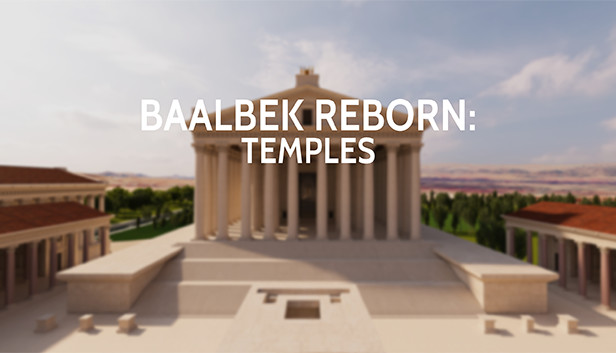
Virtual tourism and virtual time travel combine to bring ancient Baalbek back to life so you can appreciate this unique gem of art and architecture.
From the product description
I went into this experience with no expectations. I’d never even seen the word “Baalbek” before, so it was time to learn a few things. First of all, the name refers to a city. Not just any city though. It’s absolutely amazing how long this city has existed. The area is believed to have been settled for thousands of years, and the city itself is dated back to the 300’s BC. Obviously, the modern version looks a bit different, but it’s pretty amazing reading about the ancient Greeks and Romans occupying it at various times, and its temple complex is believed to be an early palace of King Solomon. Clearly this is a place full of history to be explored.
It’s great to see experiences built around lesser-known ancient sites. There are certain places that get covered more extensively and everyone knows about them. We’ve all seen Stonehenge, Macchu Picchu, and ancient Rome (not that new takes aren’t welcome), and they’re often the focal point of stories and movies so we feel familiar with them. It’s a great feature of VR that you can learn about “new” places like this in a deeply immersive way.
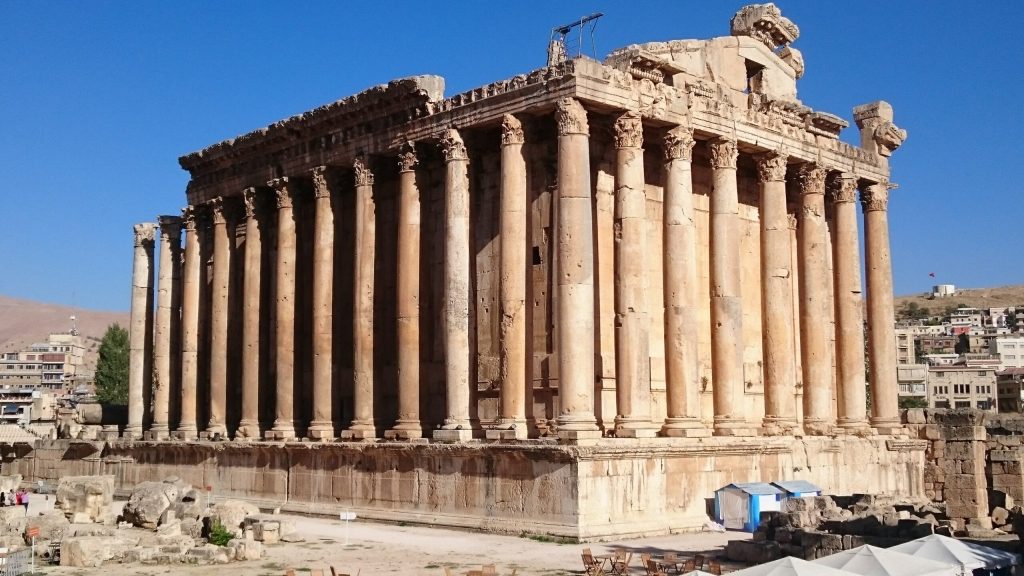
About the Experience
Baalbek Reborn is a guided tour experience. It’s not about wandering around areas and exploring. There are over 30 spots where you can look around and listen to commentary. I say look around very literally, in that this is exclusively a 360° (spherical) photo experience. Being 360° implies two-dimensional (3d is only possible with flat or 180° captures) so there’s no depth at all. You carry around a card with the information written out and controls for the audio. As far as experiences go, there isn’t much to it. It’s great having so many scenes to visit, but it’s really just about sitting back and passively learning.
The tour begins over the current city of Baalbek looking down from an aerial photo. This is flat on the ground rather than spherical, though you still can’t move around.
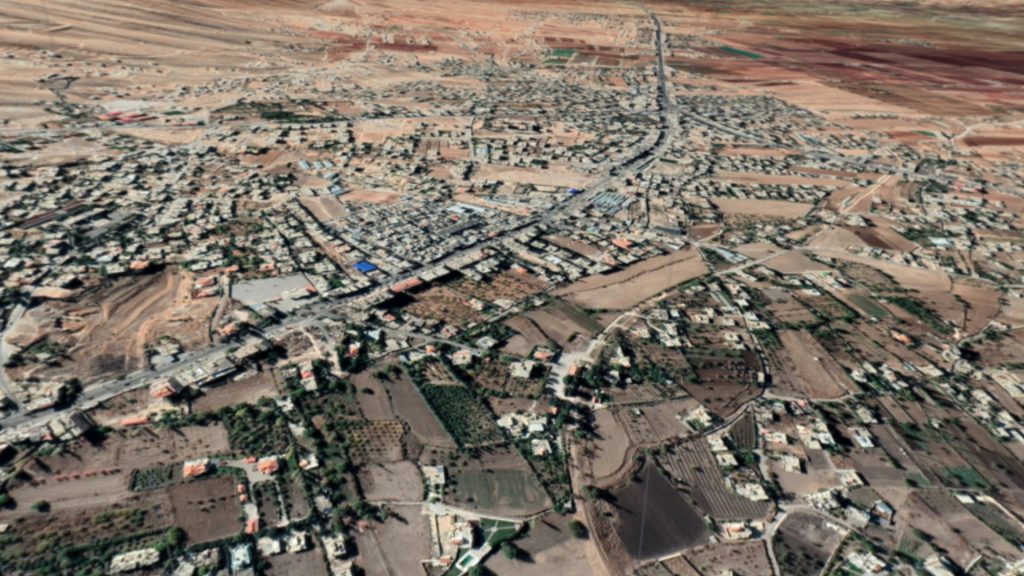
Once you start exploring the temple complex, you can switch between views of the current state of the site and virtual reconstructions from 215 AD. While I dislike photo-based experiences, I like the general idea of being able to switch views. There have been many times during travels in real life that I wished that I could wear a pair of augmented reality glasses to overlay a reconstruction over the current scene. I’ve even seen a few sites that use glass for this effect when you stand in the right spot.
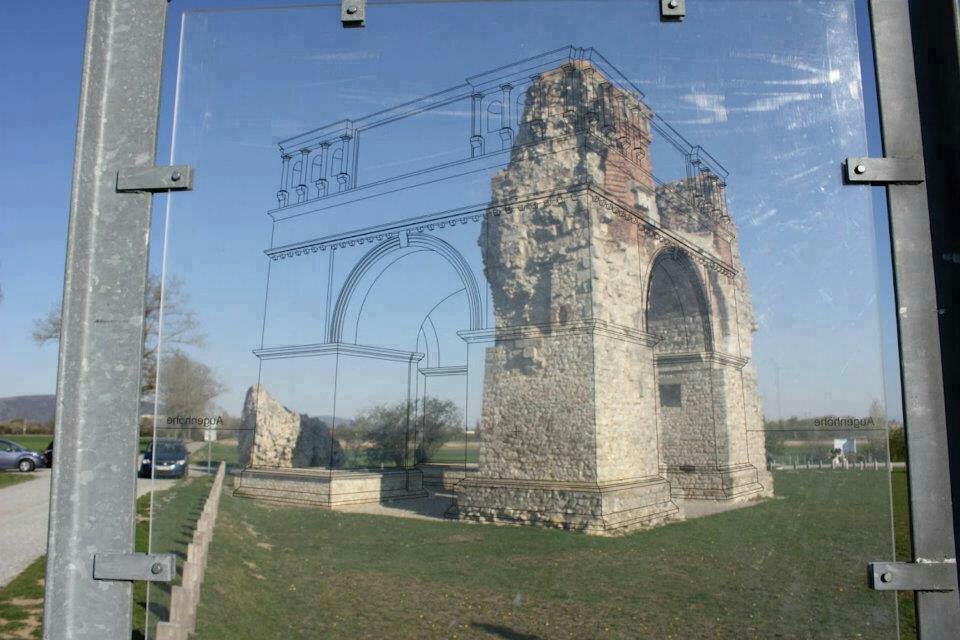
The focus on what it may have looked like (the “reborn” part) is nice. It’s not super-realistic, but you get some of the scale of the locations. There are people in the scenes sometimes (both in the current photos and the rendered reconstructions) but they are just static fixtures. In many of the stops on the tour, the switch between the present and reconstructed views are from the same basic viewpoint, but not always. It works best keeping the perspective, especially since you can’t change your point of view.
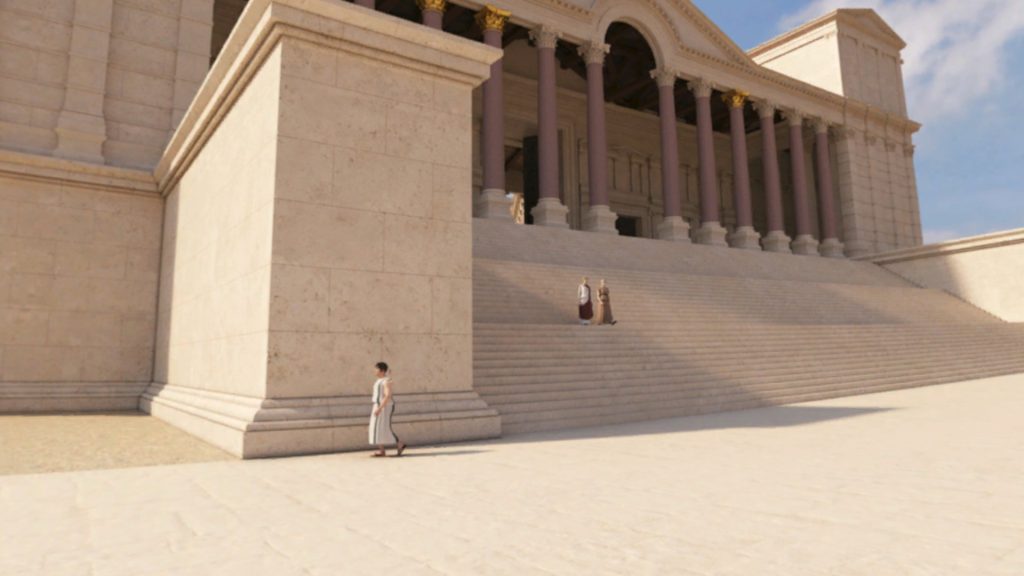
Graphics
Since this is a photo-based experience, the visuals are rendered from a single point-of-view within the sphere. This means that you can’t get any closer, and if you move your head more than an inch or so, you may feel nauseous, as I do. The images are clear and well-lit. It surprised me a bit to see tourists in the modern photos. Usually, historical experiences like these capture their shots without people around, but it’s not the first time I’ve seen this. I’m sure it just depends on the access they can arrange.
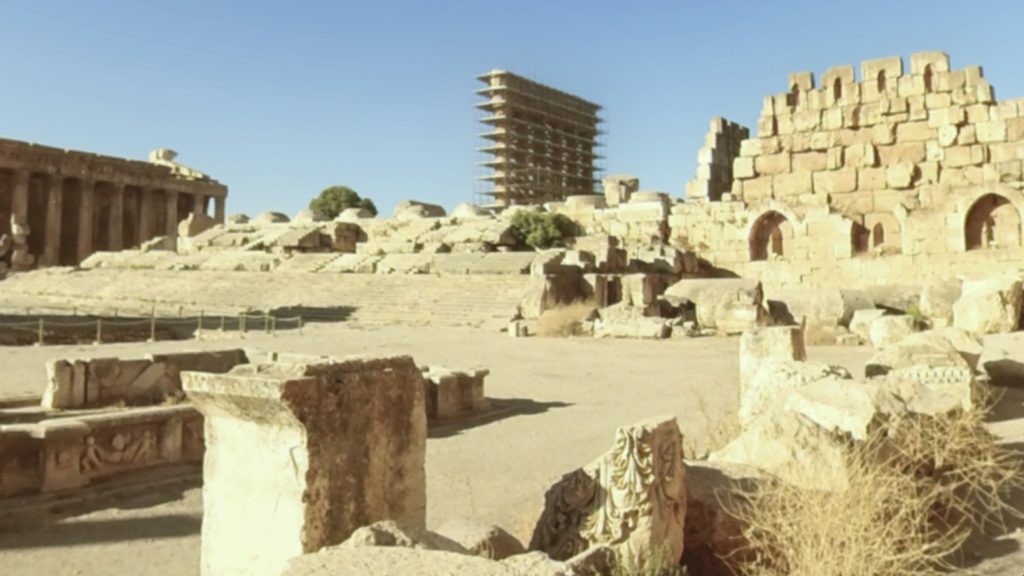
Information
The information density is great. If you want to learn about the city and temple complex, you’re in the right place. The narrator speaks clearly (in several languages) for anywhere from 1-5 minute per tour stop. I like that you can pause and seek around the clip using the control card on your left hand. From the card, you can click the settings gear in the upper-left (language, credits, quit), and the play/pause button in the lower-left.
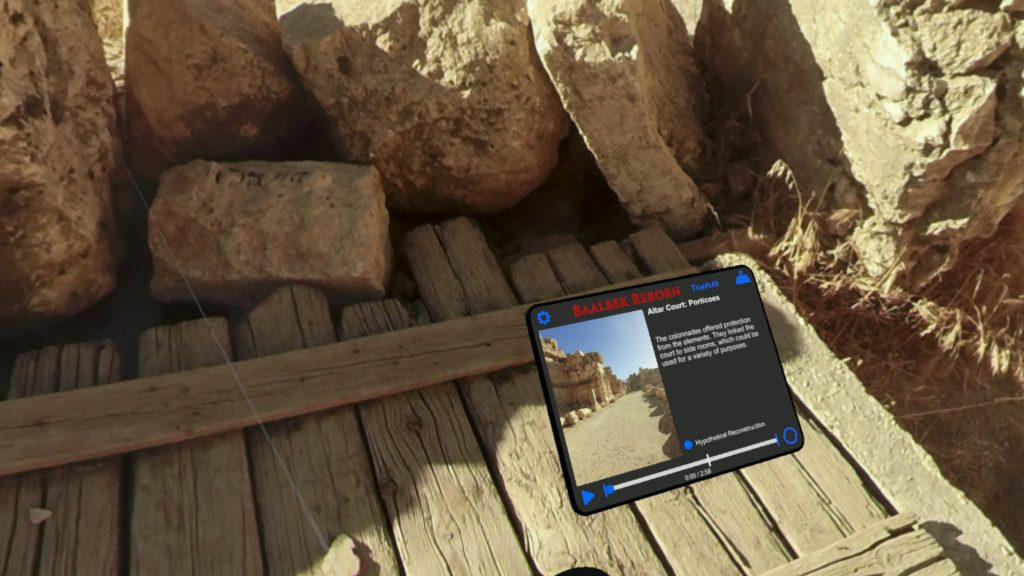
In most scenes, there is also a button to click in the lower-right to switch between modern and reconstructed views. This view also switches automatically during the course of narration. It really does breathe life into the fallen rocks to see the former glory. Click on the image on the card and it will enlarge a bit (though still a 2d image). Some stops/scenes have more than one photo on the card to view.
In the upper-right, you can click a map. This brings you to a view of tour stops around the temple complex. You have numbered circles overlaid on essentially a floorplan of a given temple areas. You can click one of the numbers to go there or use left/right arrows to see maps and points in other areas. It’s nice to be able to move around in your own order. It’s also nice that when you listen to the narration for a point, it changes the circle marker to a checkmark, so you remember which ones you’ve already seen.
Interactivity
Since this is a guided tour, there are no items for interaction. You can interact with the information card in order to navigate the tour, but not the sites or any items within them.
Update Potential
There is no indication of additional content to be added in the future.
Summary
Pros
- Well-done narration
- Lots of tour stops around the complex
- Very informative
Cons
- No immersive volumetric/photogrammetric scenes
- Reconstructions look more architectural than realistic
If you’d like to learn more about a very ancient city, this is a great experience for you. I’d like to rate it higher due to its comprehensive documentary content, but its lack of any real sense of immersion is a big disappointment. I might be ok with the current-state photos being spherical as they are, but I’m very curious why they would pre-render spherical views of the reconstructions when that would have been relatively easy to use for a free-roam experience. Considering it’s free, it’s definitely worth the download. Sit back, listen, and learn about some ancient history. You might not feel like you were there, but you’ll definitely be enriched.

